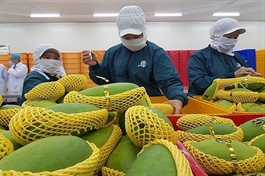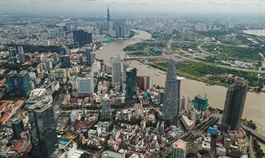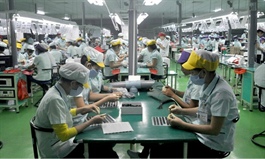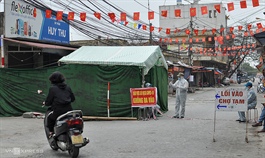Vaccines pave way for new investment
Vaccines pave way for new investment
With the first batch of COVID-19 vaccines officially arriving into the country, Vietnam is increasing its pandemic prevention measures and therefore remaining on the road to strong economic recovery.
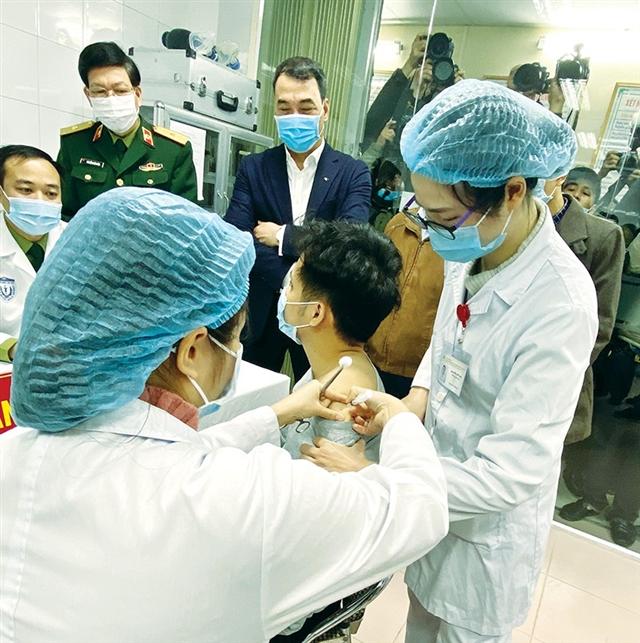
Vaccine trials in Vietnam are making steady progress. Photo: Dat Dat
|
New hopes for the population came on February 24 when the first batch of nearly 118,000 doses of AstraZeneca’s COVID-19 vaccine arrived at Tan Son Nhat International Airport in Ho Chi Minh City.
Deputy Minister of Health Truong Quoc Cuong said, “The vaccine arrives timely for the country’s fight against the pandemic. While Vietnam has strived to control the virus spread, community vaccination plays an important role to achieve the dual goals of fighting against epidemics and developing the economy.”
The vaccine has been shown to be effective at preventing symptomatic COVID-19, and has been granted conditional marketing authorisation or emergency use approval in more than 50 countries, with the World Health Organization Emergency Use Listing accelerating the pathway to access in up to 145 countries through the COVAX Facility, the global procurement arm of COVID-19 Vaccines Global Access.
The Ministry of Health (MoH) is now moving to increase further import of vaccines from other suppliers in line with the government directions, while making preparations to quicken inoculations in order of importance with the 11 priority groups of people to receive the COVID-19 vaccination already announced.
According to Minister of Health Nguyen Thanh Long, the MoH is working to ensure supply of 100 million doses of the vaccine, including 30 million doses from the COVAX Facility, 30 million from AstraZeneca, 30 million in negotiation with Pfizer, and perhaps more from Russia’s Sputnik V, which could possibly supply up to 60 million doses for Vietnam.
Together with the vaccine import, which makes Vietnam together with Thailand the two first countries in ASEAN to receive the COVID-19 vaccine, Vietnam’s domestically-made COVID-19 trials are in line with the schedule, and it is expected that production will begin next year.
Vietnam was one of the first countries to successfully control SARS, A/H5N1 flu and A/H1N1 flu, and prevent a number of emerging dangerous epidemics such as influenza A/H7N9, Ebola, and MERS.
Vietnam’s latest battles with the coronavirus have been contained, with the latest wave from the end of January hitting 13 cities and provinces. As of last week nearly all of the localities experienced well over a week of suffering no new cases.
Swift and continued control of the situation is doing wonders for economic recovery compared to other nations worldwide. As more countries quicken the vaccination process so as to bring trade and life back to the normal, economic movements and national attractiveness is beginning to rise again this year.
Vietnam’s GDP grew 2.91 per cent in 2020 despite the pandemic challenges, making it one of the three countries in Asia that gained positive growth.
The economy continued to show signs of recovery in January on the back of the government’s supporting policies when the index of industrial production rose 22.2 per cent on-year, registration of newly-established businesses ascended 21.9 per cent in number and 25.9 per cent in capital, and public investment disbursement increased 24.5 per cent.
According to the General Department of Vietnam Customs, from January 1 to February 15, the economy’s total export and import turnover hit $74.16 billion, up 31.1 per cent on-year – tantamount to a rise of $17.58 billion. The country’s successful control of the pandemic has won confidence of business community, and has become a target for a range of new plans for investment shifts.
According to statistics from the Ministry of Planning and Investment, in the first two months of 2021, the disbursement of foreign capital reached $2.5 billion, up 2 per cent on-year.
The World Bank forecast that the global economy is expected to expand 4 per cent in 2021 after shrinking 4.3 per cent in 2020. In this recovery, Vietnam’s prospects appear positive as the economy is projected to grow by about 6.8 per cent in 2021 and, thereafter, stabilise at around 6.5 per cent.







